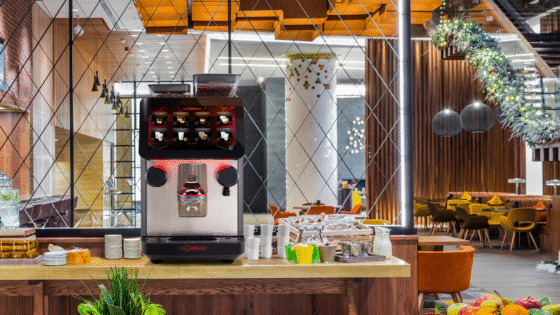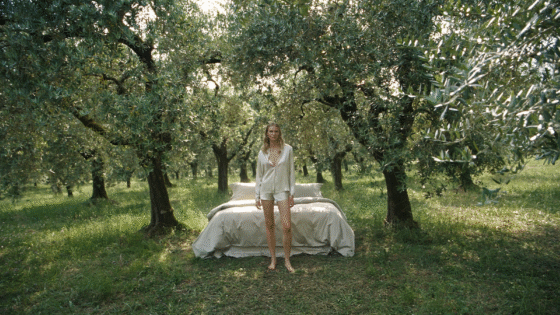With a little help from our friends at ADP Architecture, we explore how a hospitality brand’s personality can burst with creativity inside a heritage hotel. Amrit Naru, Director of ADP architecture, writes…

It’s no secret that finding a suitable spot to build a new hotel is incredibly challenging. This is especially true in cities and towns, where open spaces are few and far between. But focusing on this idea of ‘open space’ misses a trick: with a bit of creative thinking, many hospitality brands are finding that their next hotel may have already been built.
This is certainly not a new idea, although challenges like the climate crisis have brought it to the fore. From former banks, department stores and offices to dilapidated theatres, there’s a worldwide treasure trove of underused buildings waiting to be brought back to life. Done well, this approach can unfold a rich, multi-layered story for guests and visitors, built on the foundations of a site’s intriguing historical features, and evolving through thoughtful redesign.
‘Doing it well’, of course, is the key here. History is full of insensitive reuse and shoddy restorations; any project like this also needs to work for the whole community, who will have strong attachments to historic buildings and landmarks. This means that it’s essential to collaborate with as wide and inclusive a group as possible, covering disciplines as varied as architecture, interior design, artwork, branding and marketing, sustainability, technology, legal support, financial advice, historical expertise, and the practical work of construction.
Take North Tyneside, where ADP’s Newcastle studio recently worked with the local council to bring new life to Spanish City. This Edwardian seafront building with its distinctive dome is a shining example of early 20th-century seaside entertainment – but in spite of its latter-day fame as a venue for live rock music, Spanish City eventually fell into disrepair and was left empty in 2002. When North Tyneside Council began their ambitious plan to regenerate the complex, it was essential for them to consider how an Edwardian building could appeal to 21st-century interests, without losing what had made it special in the first place.
It’s worth looking at this problem in more detail, since it’s at the heart of every project to repurpose a historic building, and sparks questions which certainly don’t have easy answers. What is the history of the building, and why is that history interesting or valuable? How can a new identity – as a hotel or leisure venue – add to that history as a new chapter, rather than detracting from it? What key physical elements and ideas could best tell this story? How can the team use art, design and architecture to help guests understand the identity and story of the hotel – and, ultimately, allow them to participate in it?
At Spanish City, for instance, uncovering that history involved reversing some of the changes that had happened during its lifetime. The building’s standout feature is its dome, constructed from reinforced concrete with a technique perfected in France and scarcely seen in the UK at the time. From the outside, the dome has always been visible for miles around; inside, though, an additional floor was added barely a decade after Spanish City opened. One of the most magical moments in our renovation of the building was removing that floor, and experiencing – for the first time in almost a century – the feeling those first visitors would have got when they stood on the ground floor and looked up through the triple-height atrium to the dome above.

At Spanish City, the standout feature is its dome, constructed from reinforced concrete.
Of course, there are additional challenges when a historic building is involved. Planning introduces new demands and stakeholders such as local conservation groups: the key here is to view the planning process not as an obstacle to be overcome, but as an opportunity to make sure that the project works for everyone. Put engagement first wherever possible, and speak to the community as early as you can to get their buy-in and understand their concerns. Investing that time early on can pay massive dividends at the planning stage – and can even turn a potential naysayer into a passionate advocate.
This frees up time and effort to make sure you get the details right. Infrastructure standards across historic buildings can vary wildly, and it’s vital to understand what you’re dealing with in terms of fabric and mechanical or electrical components. Do these need to be upgraded? Adapted? Or ripped out entirely and replaced? If the building had a different former use, how will the new infrastructure need to reflect that? Bear in mind that the infrastructure demands for a modern hotel are far different from other commercial uses, particularly when talking about older buildings.
- Image caption: Exterior of Spanish City
- Image caption: The team at ADP Architecture onsite at the Spanish City project
Again, these surveys will need to happen early enough in the process to allow you to make a decision on whether the development is feasible – and not only from a financial perspective. Historic buildings often rate poorly in terms of sustainability, so engineers and technical experts will need to think carefully about whether (and how) the site can be made to meet required standards of any zero-carbon initiatives or sustainability goals. Not putting in that early legwork can lead to massive disappointment later down the line.
If this all sounds a little overwhelming, it may help to remember that any number of historic buildings can be and have been converted to hotels, restaurants and recreational destinations – often with tremendous success. Where there are challenges, there are also a wide range of innovative and exciting solutions, and an apparent hurdle could be the USP of your new hotel. Take Oxford Castle, where we designed a particularly unusual historic conversion: turning a 19th-century prison into a modern hotel for the Malmaison brand. The project’s success lay in identifying unexpected similarities between two apparently very different types of building, and our approach was encapsulated in the way that the original prison doors –used to keep prisoners in – became doors to private rooms, keeping the rest of the world out.
In fact, a single detail like that – a door, a view, a piece of decoration – can act as a hook to a much wider story, turning a routine overnight stay into something truly memorable. This effect often gains extra power from its unexpectedness, as guests typically don’t expect a hotel to tell a story. It’s important to make wider decisions about how that story fits into the more practical context of a project: how each space can tie into the narrative, from rooms to add-ons like a spa or retail, and how a brand can potentially add to (or detract from) the message.
Looking to the future, our adaptive reuses must resonate with sustainability. New technologies that mitigate the challenges of rising energy costs were the draw of a shiny new state of-the-art building – think building management systems, sustainable energy, innovative construction methods and materials – alongside all the elements that a future guest will expect. These technologies and elements are now more easily integrated (and accepted by the conservators and planners) into older buildings. And they have become more accessible and affordable to support the viability of these developments.
Our focus at ADP is on the positive experiences our buildings create for people and communities, and how they can benefit the environments around them. We work with our clients using a bespoke Sustainability, Belonging and Engagement (SBE) Assessment Tool and a research-based approach to measure, monitor and maximise the adaptive reuse and longevity of a building.
The potential to transform historic buildings into unique and long-lasting hotels is endless if you approach with creativity and a confident vision of what an unloved asset could become.
ADP Architecture is one of the brands that has taken advantage of our Industry Support Package. To keep up to date with supplier news, click here.
Main image credit: ADP Architecture






